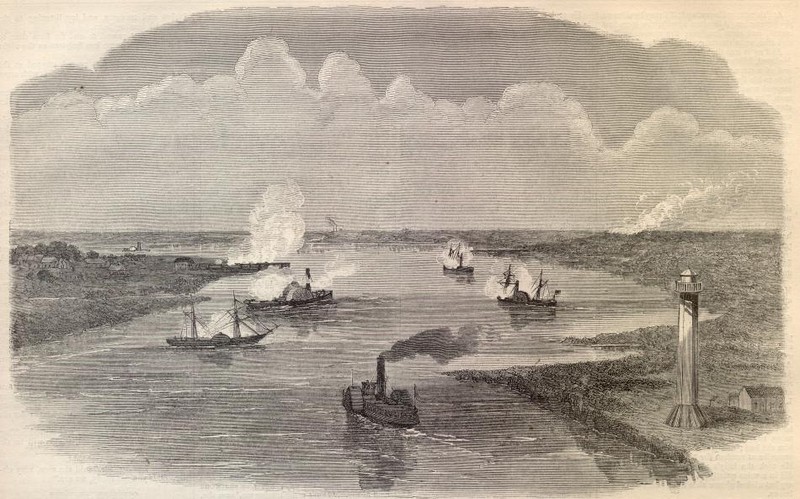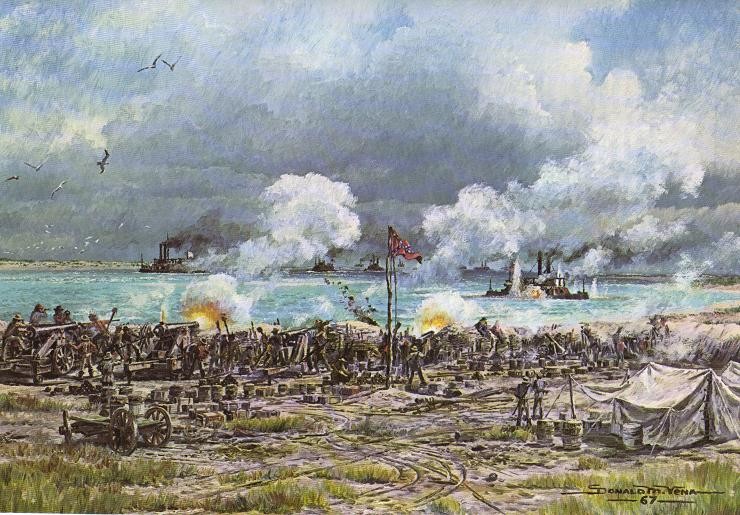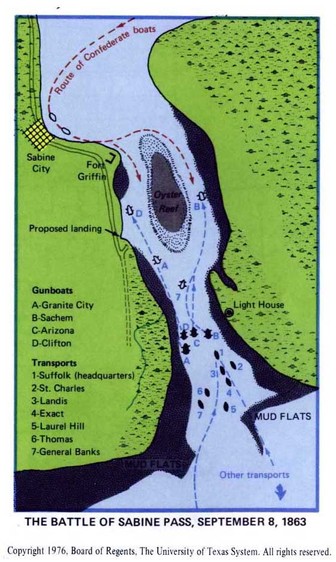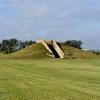Sabine Pass Battleground State Historical Park
Introduction
Text-to-speech Audio
Images
Battle of Sabine Pass

Painting rendering the Battle

Map of the pass

The remaining ammunitions form WWII

Backstory and Context
Text-to-speech Audio
During the second year of the American Civil war, the Confederacy was facing a Union blockade that stretched from Washington, D.C. to the Mexican border. The blockade was implemented in the summer of 1861 when the Navy began its attempt to gain control of the Texas coast. The blockade prevented the C.S.A. from receiving the necessary supplies needed to fight. These supplies were given to The South by sympathizers in the French and British governments. With the blockade in place, their only effective means of trade was the use of blockade runners, which could only carry limited supplies to keep their weight down. However, a new opportunity opened up south of the border when the short-lived Second Empire of Mexico replaced the previous Mexican government. This new Empire was loyal to the French, making it possible for France to ship supplies to Mexico and have them brought to the Confederates through Texas.
Wanting to prevent this, President Lincoln and his generals agreed that they needed to cut Texas off from the rest of the south by sailing up the Sabine River on the border of Louisiana. To do this, The Union planned to land 5,000 troops on the Texas side of the river; The ideal landing spot was Sabine City just north of Fort Griffin, a lightly defended gun position under the command of Lieutenant Richard Dowling. Anticipating a Union expedition up the river Dowling and his men placed markers in the river to mark the distance. The markers allowed them to zero in on their targets much faster, which let them put more pressure on the approaching Union gunboats and transports. The shelling from the fort was eventually enough to turn back the Union force but not before they lost two gunboats. By the end, somewhere around 200 hundred prisoners were taken from the wrecked gunboats. On the other side of the fight were Dowling and his 36 men, who sustained zero casualties.
Now, the site of the historic Civil War Battle has not only been declared a State Park but also holds a commemorative site to the battle itself. The location also contains the historical value from its role in World War II, when the U.S. Army used the site. Additionally, because of the area's vulnerable position to hurricane damage, it was named one of the ten most threatened American battlefields as of 2009 by the Civil War Preservation Trust.
Sources
http://www.visitsabinepassbattleground.com/index.aspx?page=14 http://www.civilwar.org/battlefields/sabinepass.html http://blog.hmns.org/2011/08/richard-dowling-the-battle-of-sabine-pass-and-the-davis-guards-medal/
http://www.ussarizonacivilwar.org/blockade-runner
https://hauntingsinhistory.wordpress.com/2017/08/15/sabine-pass-battleground-sabine-pass-texas/
The University of Texas System
https://www.thc.texas.gov/historic-sites/sabine-pass-battleground-state-historic-site
